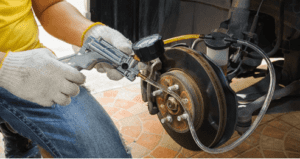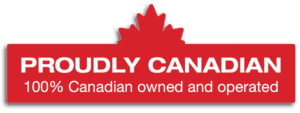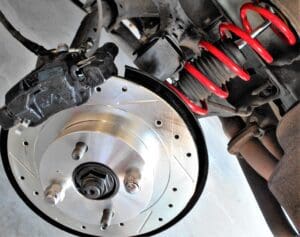Brake Repairs
Brakes are one of your vehicles biggest safety features, that's why at Central Tire Edmonton we take brake repairs so seriously. Bring your vehicle in to us for a FREE brake inspection and our qualified service technicians will make sure your brakes and in great shape, If not we can always do the repairs right away.
THINK YOU NEED BRAKE WORK - CHECK ANY OF THE FOLLOWING
- Pedal pulsation (vibrating) when you go to press your brakes
- Grinding noise when stopping
- Low brake pedal
- Vehicle pulls to the left or right when stopping
- Brake light on your dashboard
If you check off any of the following symptoms please give us a call or email so we can get your vehicle properly inspected and back on the road safely.
- Brake Pads
- Brake Rotors
- Brake Lines
- Brake System Flush
- Brake Calipers
- Antilock Brake Systems (ABS)
- Brake Pulsations
We use standard OEM approved parts and all our work comes with a 1 year manufacture warranty on parts and 1 year in house labor warranty.
BRAKE FLUSHING

One of the most important systems on any car or truck is the one that lets us slow down and stop when necessary. Most of us take our brake systems for granted until we find ourselves in a situation where we are driving down a steep grade and need to slow down to stay safe. The brake system is made up of a number of essential components including brake pads, calipers, rotors, brake master cylinder, and brake fluid. Brake fluid has been referred to as the life blood of the system as its job has to do with both protection and facilitation. Let's get familiar with hydraulic brakes and find out why it's important to have the system flushed at scheduled maintenance intervals.
Slowing down and stopping are almost involuntary activities that most of us don't even think about when we're out on the road. However, there are a number of processes happening every time we push down on that pedal. When the brake pedal is pressed, a piston rod is pushed into the master cylinder which allows fluid to move into a hydraulic line. Hydraulic lines or hoses can be made of stiff or flexible materials. Engineers have designed most brake lines with minimum flexibility in mind. This type of construction helps to keep fluid inside the line as expansion is outward instead of flowing towards the caliper.
Calipers work in various ways. Cars with hydraulic brake systems use a disk and the caliper sits on either side of a rotor. The master cylinder connects to the caliper. When fluid goes through the line into the caliper, pistons inside it are activated and move inward to the rotor. Brake pads are located between the rotor and pistons. If your car has hydraulic drum brakes, the caliper or wheel cylinder is inside of a metal drum. Rather than pushing inward, the pistons move outward to depress brake pads on the inside of the drum instead of the outer side of a disk.
When you press down on the brake pedal, you will feel resistance as your vehicle slows down. This pressure is the result of hydraulic brake fluid which provides the required force for all the mechanical processes to take place. This means that brake fluid is also essential for your safety because without it, the brake system on your car or truck will not work properly. This specialized fluid is designed to protect metal brake system components from rust and corrosion by absorbing moisture. Over time, the fluid can absorb so much moisture that it becomes saturated. Brake fluid can also break down over time due to extreme heat. Contaminated and worn out fluid can cause the brake system to be less responsive. The solution to this problem is to have the system flushed..
The basic procedure for flushing a hydraulic brake system consists of pressurizing the brake master cylinder and adding fresh brake fluid. At the same time, the brake lines underneath the vehicle will be opened to allow the old fluid to be drained and discarded. This preventive maintenance procedure will restore braking responsiveness, stop corrosion, and help prevent unnecessary breakdowns. As a general rule of thumb, the hydraulic brake system should be flushed every 30,000 miles. You can also ask your local certified repair shop to test the health of your brake fluid. The owner's manual should also contain a detailed schedule of all necessary preventive maintenance procedures.
Book a brake service today -- Service --
BRAKE SERVICES
Preventive maintenance on brakes can save you on costly repairs, come see us for a free quote


